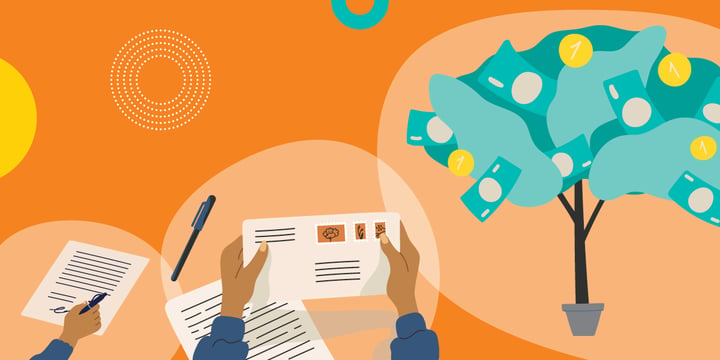I started writing grant proposals when I was in my 20s, working as a fundraiser for a small but dynamic grassroots environmental organization in Alaska. It took me another 20 years before I realized the importance of actually establishing a fully realized grantseeking program built on clearly articulated goals and objectives, as well as the importance of creating a specific strategy around each and every project that required funding. I learned that if you want to keep the grants pipeline full, you have to adopt a process and use that process consistently.

As a novice grant writer I was relatively successful, but much of that success was based on the issue (conservation) and the location (Alaska), not on my skills. In a way, I was blessed because I was successful. In another way, this hindered me because although I was securing grant awards, I really wasn't learning as much as I could about what I now think of as "intentional" grantseeking. I have to say, though, this period did provide a good training ground without rejection letters chipping away at my confidence.
Once I left my job at the environmental center, it didn't take me long to realize that organizations can submit a grant request here and there, and they may (or may not) get them funded, but if that same organization adopts an intentional approach, their success rate goes way up. I learned that luck is definitely not a strategy!
If you really want to build a resilient grantseeking program for your organization — one that survives both denials and awards — now might be the time to adopt a consistent process that will foster a strategic approach to getting your projects and programs funded.
Strategic Grantseeking
We all want to develop the ability to think strategically. But thinking strategically can be a bit of a brain twister. I often find myself scratching my head when someone starts talking about strategy. Are they talking about tactics? Or are they talking about a broader view, perhaps referencing policy? It seems that if you introduce the word strategy into a conversation, clarity can go down the drain.
Thinking strategically about your grantseeking program is really just a matter of making projections based on your internal resources and your knowledge of external factors that may impact your grantseeking efforts. You must also keep your leadership involved so you have the support you need to be successful. The process of developing a grant strategy for funding a specific project will clarify its purpose and allow you to make effective decisions, resulting in better implementation and, ultimately, greater return.
Securing grant support for your organization is so much more than just finding the opportunity and writing the proposal. There are many pieces that need to be in place for you to be able to successfully receive the award. Building the infrastructure needed to manage your grantseeking program effectively takes a little time up front, but it is well worth the time. Having policies and procedures in place, as well as setting goals and objectives will make a world of difference as you move forward.
Adopt Policies and Procedures
Keep in mind that a grant award is a contract, so it is important to have board-adopted policies and staff-developed procedures in place before you enter into an agreement. Clearly defined policies will ensure that your grants program has integrity. These policies will
- Provide a solid foundation for the submission, receipt, and management of grants
- Articulate the areas of involvement and approval
- Ensure transparency and clarity
Here is one example of a policy you may want to adopt:
Grant Proposal Approval Policy: This policy is to ensure that leadership is aware of the proposals submitted. Indicate which leaders should sign off on the proposals and the grant amount that requires approval.
You can investigate other policies you may want to adopt by visiting the Association of Fundraising Professionals or the National Council of Nonprofits.
You or your staff will also want to adopt a set of procedures you will follow when submitting or receiving a grant award. This will include such things as who is notified when an award is received, who signs the award contract (if necessary), how you will track a grant award, who prepares grant reports, and so on.
Set Goals and Objectives
Before you launch into grantseeking, it is important to know what your ultimate goal is and to establish measurable objectives that will drive you toward realizing that goal.
Keep in mind that your goals are visionary. They aren't really measurable but give a fairly good indication of how you would like to see your grantseeking program grow. For example, you might have a few goals that address engaging with new funders, something like: To cultivate several new, significant relationships with grantmakers in 2022-23.
This is a very broad statement, but it will help guide the development of your program. Then, of course, you have to adopt measurable objectives to give some weight to those visionary statements. Unlike the goal, you can actually gauge whether you achieved an objective. Here are a few examples of good, measurable objectives:
- To submit a minimum of 11 applications within the 18-month period
- To secure three grant awards within the first six months
A basic consideration when developing your objectives is around timing. Start by considering what time frame you'd like your objectives to cover. A grants program requires a much longer lead time than special events or membership drives. I recommend working 18 to 24 months out when it comes to grantseeking for a variety of reasons. It gives you the necessary lead time to develop a proposal. Plus, application deadlines may be well into the future: Some are monthly or quarterly, but many are annual. So based on when you learn of the opportunity, the deadline could be next week or almost next year.
There is also the time after you submit the proposal where you are waiting for approval or denial, and then there can be a bit of lag time while you are waiting for the money. For example, if you refer to the 2021 State of Grantseeking Report, you will note that there can be a significant waiting period from submission to award decision (not release of funds, mind you!). You need to factor in this lead time in your overall objectives for the program. Timing, my friends, is critical.
Also keep in mind that a good objective is specific. As you know, if you can't articulate specific objectives for your organization, a program, a project, or your team, it is both difficult to move forward and difficult to measure achievements. You can always adjust your objectives as you go, based on how your grantseeking progresses, but having a specific starting point can drive you towards a more successful program.
Join Me in a Webinar
In my TechSoup webinar Building a Grant Strategy for 2021-22, I talk a great deal more about strategic grantseeking. I teach participants how to build and use a Grant Decision Matrix, the beauty of adopting a step-by-step process to identify the best funders for their program and projects, and the importance of thinking through a strategic approach as you write and submit requests. I hope you'll join me!
Now is a great time to start using GrantStation — on February 14 and 15, you can get GrantStation for only $99 (normally $199). Don't miss it!
Additional Resources
- More from Cynthia M. Adams: Grant Writing and the Perfect Storytelling.
- Watch the webinar Grant Writing in 2021: What’s Different and What’s the Same?
- Sign up for TechSoup Courses' series Grant Writing and Management.
Top photo: Shutterstock








